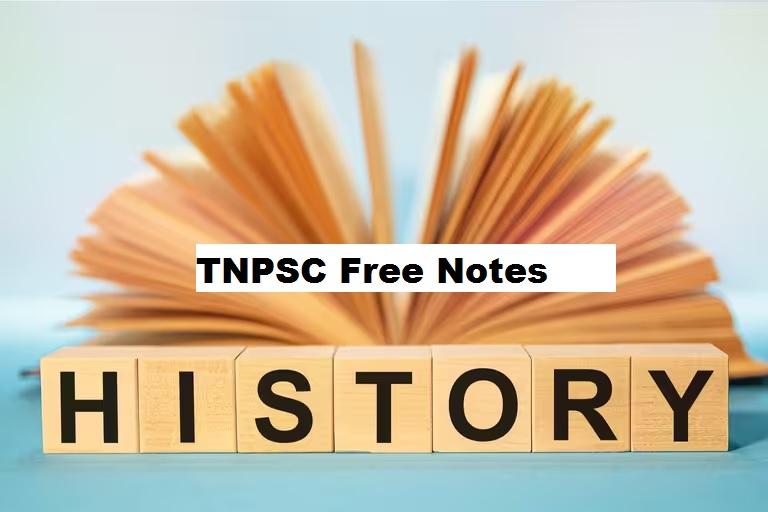இந்தக் கட்டுரையில், TNPSC குரூப் 1, குரூப் 2, குரூப் 2A, குரூப் 4 மாநிலப் போட்டித் தேர்வுகளான TNUSRB, TRB, TET, TNEB போன்றவற்றுக்கான முறைகள் இலவசக் குறிப்புகளைப் பெறுவீர்கள்.தேர்வுக்கு தயாராவோர் இங்குள்ள பாடக்குறிப்புகளை படித்து பயன்பெற வாழ்த்துகிறோம்.
Social and political life
Trade:
- Harappans were great traders.
- They used carts with spokeless solid wheels.
- Standardised weights and measures were used by them. They used sticks with marks to measure length.
- Lothal is situated on the banks of a tributary of Sabarmati river in Gujarat. There is evidence for extensive maritime trade with Mesopotamia.
- Indus Seals have been found as far as Mesopotamia (Sumer) which are modern-day Iraq, Kuwait and parts of Syria.
Social Life
- The dress of both men and women consisted of two pieces of cloth, one upper garment and the other lower garment.
- Beads were worn by men and women
- Jewelleries such as bangles, bracelets, fillets, girdles, anklets, ear-rings and finger rings were worn by women.
- These ornaments were made of gold, silver, copper, bronze and semi precious stones.
- Various household articles made of pottery, stone, shells, ivory and metal have been found at Mohenjo-Daro.
- Spindles, needles, combs, fishhooks, knives are made of copper.
- Fishing was a regular occupation while hunting and bull fighting were other pastimes.
- There were numerous specimens of weapons of war such as axes, spearheads, daggers, bows, arrows made of copper and bronze.
Seals
- The seals from various media such as steatite, copper, terracotta and ivory are frequently found in the Harappan sites.
- Square type seals are engraved with carved animals and inscriptions.
- Hundreds of rectangular seals were discovered here. It engraved with inscriptions only.
- Pictographic writings were written on them.
Script
- The Harappan script has still to be fully deciphered.
- The number of signs is between 400 and 600 of which 40 or 60 are basic and the rest are their variants.
- The script was mostly written from right to left.
- In a few long seals the boustrophedon method – writing in the reverse direction in alternative lines – was adopted.
- Parpola and his Scandinavian colleagues came to the conclusion that the language of the Harappans was Dravidian.
- The mystery of the Harappan script still exists and there is no doubt that the decipherment of Harappan script will throw much light on this culture
Religion & Decline
Faith
-
- The Indus people worshipped nature.
- They worshipped pipal trees.
- Some of the terracotta figures resemble the mother Goddess(which symbolized fertility).
- Fire altars have been identified at Kalibangan.
- The Indus people buried the dead.
- Burials were done elaborately and evidence for cremation has also been found.
Pasupathi Shiva
- The chief male deity was Pasupati, (proto-Siva) represented in seals as sitting in a yogic posture.
- He has three faces and two horns.
- He is surrounded by four animals (elephant, tiger, rhino, and buffalo- each facing a different direction).
- Two deer appear on his feet.
- In latter times, Linga worship was prevalent.
Burial Methods
- The cemeteries discovered around the cities like Mohenjodaro, Harappa, Kalibangan, Lothal and Rupar throw light on the burial practices of the Harappans.
- Complete burial and post-cremation burial were popular at Mohenjodaro.
- They buried the dead with Head facing north direction.
- At Lothal the burial pit was lined with burnt bricks indicating the use of coffins.
- However, there is no clear evidence for the practice of Sati
Decline of the Harappan Culture
- There is no unanimous view pertaining to the cause for the decline of the Harappan culture.
- By 1900 BCE, the Harappan culture had started declining. It is assumed that the civilisation met with
- repeated floods
- ecological changes
- invasions (Aryans)
- natural calamity
- climatic changes
- deforestation
- an epidemic
- In course of time, the people shifted to the southern and eastern directions from the Indus region.
- The destruction of forts is mentioned in the Rig Veda.
- It did not completely disappear.
- It continued as rural culture.
Iron Age in Tamilnadu
- It is contemporary to Indus Civilization.
- The archaeological evidence points to several groups of people living in Tamil Nadu and South India continuously from the Mesolithic period.
- One cannot rule out the migration of a few groups from the Indus region
- The graffiti found on the megalithic burial pots of South India and the place names presented are cited to establish the relationship between Indus and Tamil cultures.
- A circular tomb using big stone slabs built upon the place of burial is known as a megalith.
**************************************************************************
| Adda247 TamilNadu Home page | Click here |
| Official Website=Adda247 | Click here |








